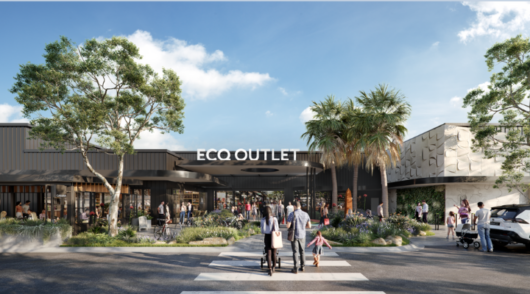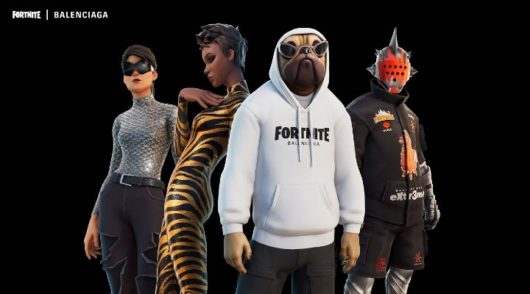 Last week’s KPMG report, which revealed that ANZ shoppers still prefer the e-commerce platforms of traditional bricks and mortar retailers to pureplay businesses, has again begged the question – do Australian pureplay retailers have an image problem?
Last week’s KPMG report, which revealed that ANZ shoppers still prefer the e-commerce platforms of traditional bricks and mortar retailers to pureplay businesses, has again begged the question – do Australian pureplay retailers have an image problem?
The report found that only 36 per cent of consumers in ANZ made their most recent online purchase with a pureplay retailer, compared to 45 per cent in North America and 70 per cent in Asia.
However, as many as 43 per cent of ANZ shoppers made their last online purchase from a multi-channel brand.
Ryan Gracie, head of marketing at Catch Group, concedes that pureplay retailers have an authenticity issue with consumers, noting that consumers feel more comfortable with bricks-and-mortar retailers because they know there’s a store to report issues to.
“It’s about customer service and engagement, rather than an actual trust issue,” Gracie told Inside Retail.
“I don’t think it’s that consumers don’t trust online players, they just don’t trust that there will be recourse if there’s an issue with something they’ve bought.”
National Online Retailers’ Association (NORA) chief Paul Greenberg agrees with Gracie’s sentiment, pointing out that one of the most visited pages on e-commerce platforms is the returns page.
“Customers are looking at the homepage and then very quickly going to ‘what will happen if things go wrong?’ Good news travels quickly but bad news travels even quicker. We need to keep up by having our fingers on the pulse of customer experience,” he told Inside Retail.
Brand independence or face to the name?
Greenberg says that many pureplay retailers have missed an opportunity to put a face to their businesses, arguing that consumers feel more comfortable trading with a human, not am impersonal business.
“Every business has a mummy and a daddy and I’m still shocked that a number of pureplay retailers are reluctant to put their personal brands in front of their business,” he said. “Customers, whether its online or offline, want to be dealing with someone not something. It’s very important to put your face forward.”
Some of Australia’s longest standing and most successful pureplay retailers have adopted the face to brand model, but Gracie says he completely disagrees, and that the strategy is fraught with risk.
“I completely disagree. The most powerful retailers in Australia are JB Hi-Fi and Myer and there’s not one person behind those brands,” he argued.
“I don’t believe that association with a human in a brand is a good brand strategy because as soon as that human stuffs up, which is human nature, then the brand stuffs up by default. Ruslan Kogan is a polarising guy and some don’t do their there shopping because of it. If you can separate yourself from the human element, then you have longevity.”
Instead, Gracie says authenticity can be tackled by businesses always being available for customers. He explained that the Catch Group has made it a priority to have their customer service line open for as long as possible.
“We believe that customers just want to know that there’s someone at the end of the line if there is an issue. It’s all about the fact that they can talk to someone to have an issue resolved,” he said.
Gracie notes that pureplay retailers have less touch points with customers, so they need to make the most of the ones they do have, but that can be difficult when operational models necessitate outsourcing.
Controlling the end-to-end
Both Greenberg and Gracie agree that one of the primary issues for pureplay retailers is that they are often unable to maintain full control over customer experience from the point-of-sale to the product reaching a customer’s door, as the logistical challenges associated with delivery often necessitate a third party contractor.
“As soon as that product leaves our warehouse, then we lose control of it,” Gracie explained. “Quite often that’s where the customer experience becomes poor because things get lost and as much as Australia Post does a good job, they’re dealing with millions of parcels every day. Things just get a bit stuffed up occasionally”
Greenberg pointed to the efforts of Appliances Online in investing in their own line of trucks to field deliveries, but conceded that such a capital intensive process isn’t realistic for most players.
Instead, pureplay up-and-comers like Koala Mattresses have attempted to deal with the problem by investing in their own end-to-end software, which they integrate into their relationship with their fulfilment partner to streamline last-mile delivery and retain as much control as possible.
Whatever the method, Greenberg predicts that pureplay retailers will continue to make moves towards trying to control more of the end-to-end process.
Maturing market
Part of the issue is the immaturity of internet retail in general across the ANZ region, KPMG’s head of consumer markets, Trent Duvall explained. Speaking to Inside Retail Duvall said that America benefits from a rich history of catalogue-focused retailing, which has conditioned American shoppers.
He also points out that whilst players like Kogan and The Iconic have made some inroads into penetrating the Australian market, they pale in comparison to the likes of Amazon and Alibaba, who have become household names in their respective markets.
“There is an expectation in the market that Amazon will come sooner or later, which presents the opportunity for the existing pureplay or bricks-and-mortar retailers to improve and embed their position in the Australian online retail landscape,” he said.





